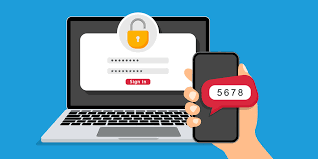
Understanding Suspicious Email Analysis (SEA) in 2025
March 17, 2025
How Cryptography Enhances Cybersecurity Posture
March 17, 2025Understanding Two-Factor Authentication (2FA)
Two-factor authentication (2FA) is an enhanced security protocol designed to prevent unauthorized access to online accounts and sensitive information. By requiring two distinct forms of identification, 2FA mitigates the risks associated with relying solely on a password. The purpose of this layered security approach is to ensure that even if one factor is compromised, unauthorized individuals cannot easily gain access to protected resources.
The authentication process typically involves three types of factors. The first is something you know, such as a password or PIN. While passwords remain a prevalent means of securing online accounts, they can be susceptible to various attacks, including phishing and brute force methods. The second factor is something you have, which may include a mobile device, security token, or authentication app. This factor adds an extra layer of security, as it necessitates physical possession of the device to complete the login process successfully.
The third factor, known as something you are, encompasses biometric data, such as fingerprints, facial recognition, or iris scans. Biometric authentication utilizes unique physical characteristics, which are much harder to replicate compared to traditional passwords. The combination of these factors in the 2FA process significantly elevates security, making it exponentially more challenging for cybercriminals to gain access to accounts, even if they have acquired a password.
Implementing two-factor authentication is crucial in today’s digital landscape, particularly as cyber threats continue to evolve. By reinforcing security measures, 2FA protects confidential information and significantly reduces the risk of unauthorized access. Therefore, utilizing this essential security practice serves as a vital defense mechanism against potential data breaches and online fraud.
The Importance of Two-Factor Authentication Day
Two-Factor Authentication Day, recognized annually, serves as a pivotal occasion to emphasize the importance of cybersecurity in our increasingly digital lives. Established to enhance understanding and promote the implementation of two-factor authentication (2FA), this observance operates as a reminder of the ever-evolving threats looming over the internet. Since its inception, the day has aimed to educate businesses, organizations, and individuals alike about the essential role that 2FA plays in safeguarding sensitive information.
The origins of Two-Factor Authentication Day can be traced back to the growing recognition of the need for more secure online practices. As cyber threats have proliferated, the significance of adopting multi-layered security systems has become more pronounced. The day is dedicated not only to raising awareness but also to encouraging proactive behavior concerning cybersecurity measures. By understanding the mechanics of 2FA, users can be better equipped to protect themselves against unauthorized access and data breaches.
Businesses, particularly those handling confidential data, are often prime targets for cyber attacks. However, the implications of weak cybersecurity also extend to individuals, who may find themselves at risk due to lax security practices. By promoting the implementation of 2FA, this observance highlights a crucial frontline defense mechanism against cyber threats. Using a combination of what the user knows (a password) and what the user has (a verification code sent to a device) significantly enhances account protection, thereby reducing vulnerability significantly.
Ultimately, Two-Factor Authentication Day is more than a calendar mark; it is an urgent call to action for everyone navigating the digital landscape. As the significance of cybersecurity continues to escalate, adopting measures like 2FA becomes imperative for safeguarding personal and organizational data from insidious cyber threats.
Best Practices for Implementing 2FA
Implementing two-factor authentication (2FA) effectively requires careful consideration of different methods and an emphasis on user education. Organizations and individuals alike can bolster their cybersecurity posture by adopting robust practices tailored to their specific needs. Various methods of 2FA are available, including SMS codes, authenticator apps, and hardware tokens, each with distinct advantages and vulnerabilities.
SMS-based authentication is one of the most common forms of 2FA, wherein users receive a code via text message. While convenient, users should be aware of potential security risks associated with phone number hijacking. As a more secure alternative, authenticator apps generate time-based one-time passwords (TOTPs), reducing reliance on mobile carriers and enhancing security. Popular applications such as Google Authenticator or Authy provide users with a straightforward way to manage their codes. For organizations handling sensitive data, implementing hardware tokens, such as YubiKeys, can offer the highest level of security, requiring a physical device in addition to a password.
When choosing the right 2FA method, organizations should evaluate their needs, considering factors like user accessibility, security level, and potential impacts on workflow. It’s crucial to implement a solution that balances security with user convenience to encourage consistent usage. Furthermore, user education plays a pivotal role in the success of 2FA implementation. Educating users about the importance of 2FA and providing clear instructions on setting up and using the chosen method can significantly reduce resistance and increase compliance.
Organizations should prioritize communication about the functionalities, benefits, and limitations of 2FA. Offering training sessions and resources can further reinforce users’ understanding, ensuring they feel comfortable with the technology. In conclusion, by effectively implementing these best practices and fostering a comprehensive understanding of 2FA, users and organizations alike can experience enhanced security in their digital environments.
The Future of Cybersecurity and 2FA
As we advance into an increasingly digital landscape, the future of cybersecurity remains a paramount concern, particularly in relation to two-factor authentication (2FA). Emerging trends indicate that while 2FA enhances security significantly, the cyber threat landscape continues to evolve, necessitating constant adaptation and innovation in authentication protocols. Several technologies are emerging that promise to further bolster the defenses of systems beyond traditional 2FA methods. Biometric authentication, such as fingerprint or facial recognition, coupled with behavioral analytics, is gaining traction as an additional layer that offers greater protection. These innovations not only improve security but also aim to enhance user experience by reducing friction commonly associated with more conventional methods of authentication.
However, despite these advancements, there are inherent challenges and limitations to consider. Usability issues often arise with 2FA, as some users find the process cumbersome or confusing. This reluctance can lead to resistance in implementation, highlighting the need for systems that are not only secure but also user-friendly. Furthermore, as cybercriminals become more sophisticated, relying solely on 2FA may not be sufficient. Continuous adaptation to threats will require organizations to remain vigilant and proactive; incorporating multifactor authentication (MFA) strategies that evaluate multiple parameters across a user’s login attempt could further enhance security measures.
As we look to the future, it is essential for individuals and organizations to take action today by adopting 2FA where possible. Staying informed about the latest advancements in cybersecurity and understanding how to implement them effectively is crucial to safeguarding sensitive information. Emphasizing education on security best practices alongside the utilization of 2FA can empower users, help mitigate risks, and foster a culture of security awareness that is necessary to combat the heightened threat levels presented by cyber attackers.




